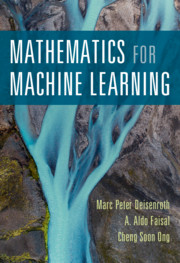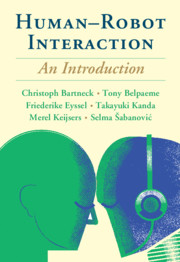Refine search
Actions for selected content:
48317 results in Computer Science
Political isolation in America
-
- Journal:
- Network Science / Volume 8 / Issue 3 / September 2020
- Published online by Cambridge University Press:
- 26 February 2020, pp. 333-355
-
- Article
- Export citation
Collecting egocentric network data with visual tools: A comparative study
-
- Journal:
- Network Science / Volume 8 / Issue 2 / June 2020
- Published online by Cambridge University Press:
- 26 February 2020, pp. 223-250
-
- Article
-
- You have access
- Open access
- Export citation
Domain adaptation-based transfer learning using adversarial networks
- Part of
-
- Journal:
- The Knowledge Engineering Review / Volume 35 / 2020
- Published online by Cambridge University Press:
- 26 February 2020, e7
-
- Article
- Export citation
selp: A Single-Shot Epistemic Logic Program Solver
-
- Journal:
- Theory and Practice of Logic Programming / Volume 20 / Issue 4 / July 2020
- Published online by Cambridge University Press:
- 26 February 2020, pp. 435-455
-
- Article
-
- You have access
- Open access
- Export citation
A channel-based perspective on conjugate priors
-
- Journal:
- Mathematical Structures in Computer Science / Volume 30 / Issue 1 / January 2020
- Published online by Cambridge University Press:
- 25 February 2020, pp. 44-61
-
- Article
-
- You have access
- Open access
- Export citation
Monoidal-closed categories of tree automata
-
- Journal:
- Mathematical Structures in Computer Science / Volume 30 / Issue 1 / January 2020
- Published online by Cambridge University Press:
- 25 February 2020, pp. 62-117
-
- Article
- Export citation
Rethinking Defeasible Reasoning: A Scalable Approach
-
- Journal:
- Theory and Practice of Logic Programming / Volume 20 / Issue 4 / July 2020
- Published online by Cambridge University Press:
- 24 February 2020, pp. 552-586
-
- Article
- Export citation
NWS volume 8 issue 1 Cover and Back matter
-
- Journal:
- Network Science / Volume 8 / Issue 1 / March 2020
- Published online by Cambridge University Press:
- 24 February 2020, pp. b1-b4
-
- Article
-
- You have access
- Export citation
Multidimensional similarity in multiplex networks: friendships between same- and cross-gender bullies and same- and cross-gender victims
-
- Journal:
- Network Science / Volume 8 / Issue 1 / March 2020
- Published online by Cambridge University Press:
- 24 February 2020, pp. 79-96
-
- Article
-
- You have access
- Open access
- Export citation
NWS volume 8 issue 1 Cover and Front matter
-
- Journal:
- Network Science / Volume 8 / Issue 1 / March 2020
- Published online by Cambridge University Press:
- 24 February 2020, pp. f1-f3
-
- Article
-
- You have access
- Export citation
Computer Aided Internal Optimisation (CAIO) method for fibre trajectory optimisation: A deep dive to enhance applicability
- Part of
-
- Journal:
- Design Science / Volume 6 / 2020
- Published online by Cambridge University Press:
- 21 February 2020, e4
-
- Article
-
- You have access
- Open access
- HTML
- Export citation

Mathematics for Machine Learning
-
- Published online:
- 20 February 2020
- Print publication:
- 23 April 2020
-
- Textbook
- Export citation

Human-Robot Interaction
- An Introduction
-
- Published online:
- 20 February 2020
- Print publication:
- 07 May 2020
Part II - Applications
-
- Book:
- Communication Complexity
- Published online:
- 30 January 2020
- Print publication:
- 20 February 2020, pp 155-156
-
- Chapter
- Export citation
11 - Data Structures
- from Part II - Applications
-
- Book:
- Communication Complexity
- Published online:
- 30 January 2020
- Print publication:
- 20 February 2020, pp 187-209
-
- Chapter
- Export citation
Dedication
-
- Book:
- Communication Complexity
- Published online:
- 30 January 2020
- Print publication:
- 20 February 2020, pp v-vi
-
- Chapter
- Export citation
13 - Distributed Computing
- from Part II - Applications
-
- Book:
- Communication Complexity
- Published online:
- 30 January 2020
- Print publication:
- 20 February 2020, pp 239-243
-
- Chapter
- Export citation
10 - Memory Size
- from Part II - Applications
-
- Book:
- Communication Complexity
- Published online:
- 30 January 2020
- Print publication:
- 20 February 2020, pp 175-186
-
- Chapter
- Export citation
Introduction
-
- Book:
- Communication Complexity
- Published online:
- 30 January 2020
- Print publication:
- 20 February 2020, pp 1-6
-
- Chapter
- Export citation
3 - Randomized Protocols
- from Part I - Communication
-
- Book:
- Communication Complexity
- Published online:
- 30 January 2020
- Print publication:
- 20 February 2020, pp 46-56
-
- Chapter
- Export citation
